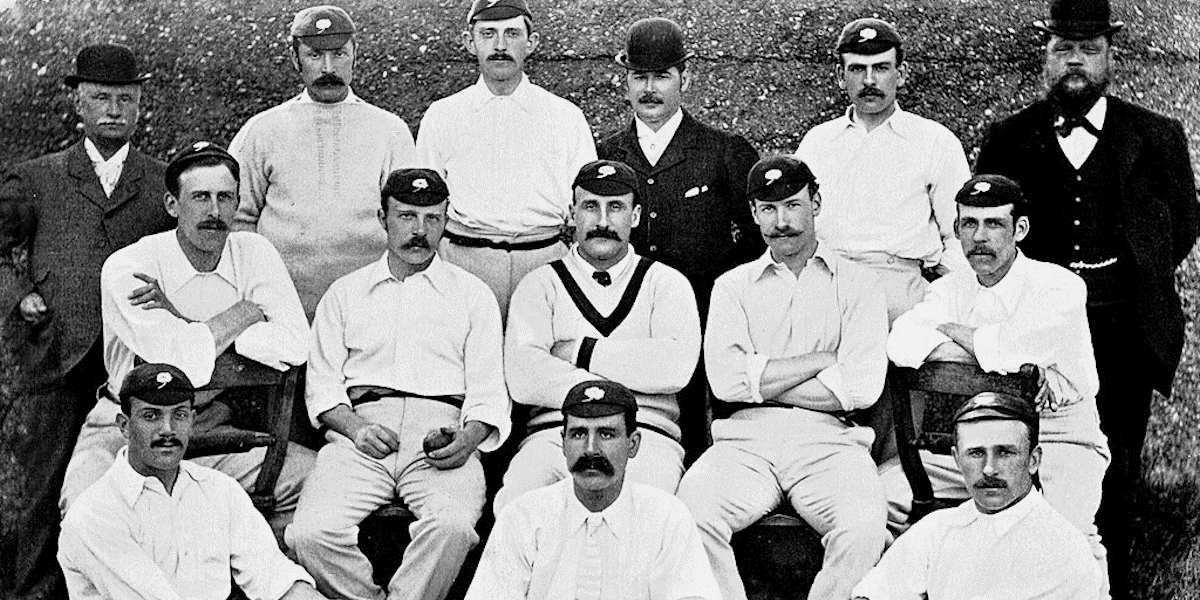Title: Different Class: The Untold Story of English Cricket
Author: Duncan Stone
Publisher: Repeater
Year: 2022
Duncan Stone’s wide-ranging and meticulously researched Different Class: The Untold Story of English Cricket takes its place as a comprehensive history of cricket with the backdrop of substantiated accusations of institutional racism levelled at Yorkshire County Cricket Board and, in turn, the English Cricket Board (ECB), and the launch of a controversial fourth format of the game, the Hundred.
The internal battles raging within cricket are at their core fights for the heart of a sport and its place in the national imagination. Stone’s history takes us back to the very beginnings of the sport and reminds us of the many ways in which cricket has been and continues to be utilised as a vehicle for building and sustaining myths about identity, class and belonging.
As Stone details early on, histories of cricket have often obscured, intentionally or not, the divides that have plagued the game since its inception and growing popularity. And as he correctly asserts, the current mire that the professional and recreational game finds itself in can trace its roots back to this period.
What might be obvious – that English cricket has been dominated by wealthy white men – is not the entire story but perhaps more accurately where material power has been concentrated. In Different Class, Stone sets out the ways in which class divides in England laid bare the contradictions of playing cricket, recreationally or professionally, and being even slightly invested in the future of the sport.
Cricket has always been utilised as a vehicle for building and sustaining myths about identity, class and belonging
Club cricket in the north of England was considered more serious than the version played in the south as players were paid, games were well attended and the competition fierce. In the south, it is the ‘spirit’ of cricket that seems to be the defining factor. Organised competition is felt to be unbecoming of the gentleman’s sport and instead playing cricket is a means to meander around a pitch, to socialise and, inevitably, to civilise. It’s this same spirit that has ensured that access to the formal structures of the sport has been and remains segregated, especially in regions where paying players for their participation was akin to blasphemy.
Left out
The exclusionary politics of cricket was further embedded during the 1980s and 1990s, when the state relinquished control of playing fields and facilities were moved into private hands, or public schools. The failures of both the ECB and Sport England are brought into sharp focus in the final chapter, which details the myriad ways in which the sporting bodies have not only failed to democratise access to cricket but have quite simply passed on responsibility to do so to third-sector organisations.
Stone is at his best when eviscerating the ECB and its naked pursuit of money above any other commitment to the sport. According to Stone, the assumptions about cricket on which the governing body operates are dangerous and dominant, upholding the ruling class as it wreaks havoc on the state, and cannot be overturned while the ECB remains in control. Stone asserts that the best of the game can be found in the grassroots but even this feels mired in political manoeuvrings and a constant battle to ‘belong’, despite the very nebulous nature of that desire.
Stone is at his best when eviscerating the ECB and its naked pursuit of money above any other commitment to the sport
The book is clearly rigorously researched and dives into details that, although not always directly pertinent to the wider points Stone makes, add colour and context to a sport that can still feel mystifying to even its casual fans. At points this level of information weighs down the otherwise cogent analysis. Stone seems caught between offering a thorough and accurate history of the sport and suggesting a coherent and studied solution to its woes.
Although this intervention should rattle the individuals and institutions bowing to cricket’s worst impulses, it likely won’t do that. What it can do, however, is provide those people who still believe there is something to be salvaged in the sport a historical lens through which they may continue the fight.










